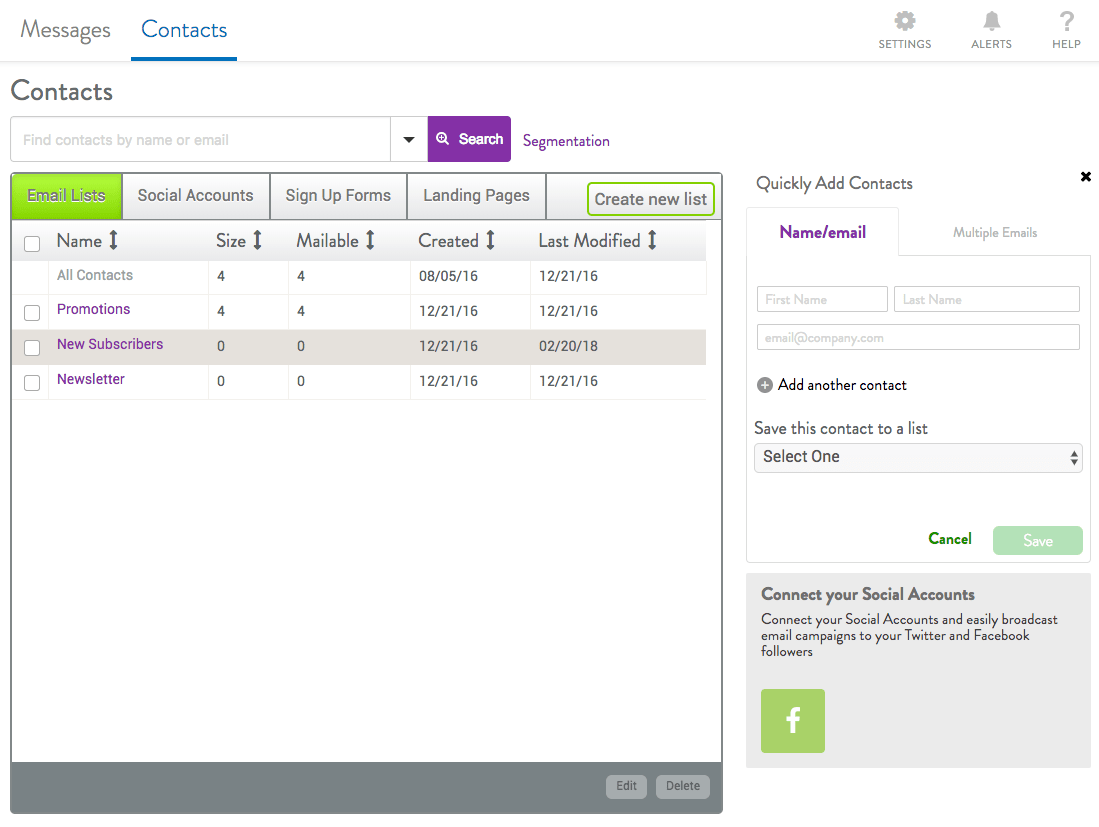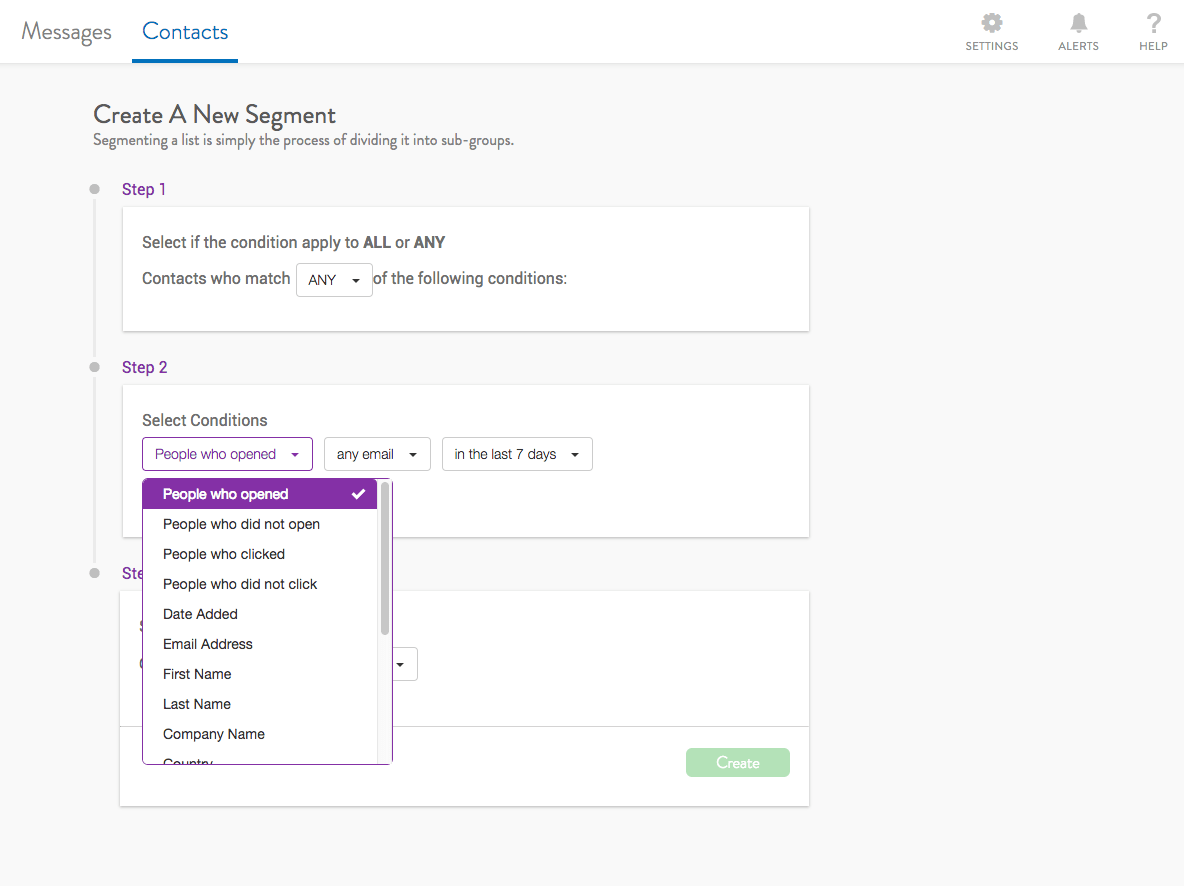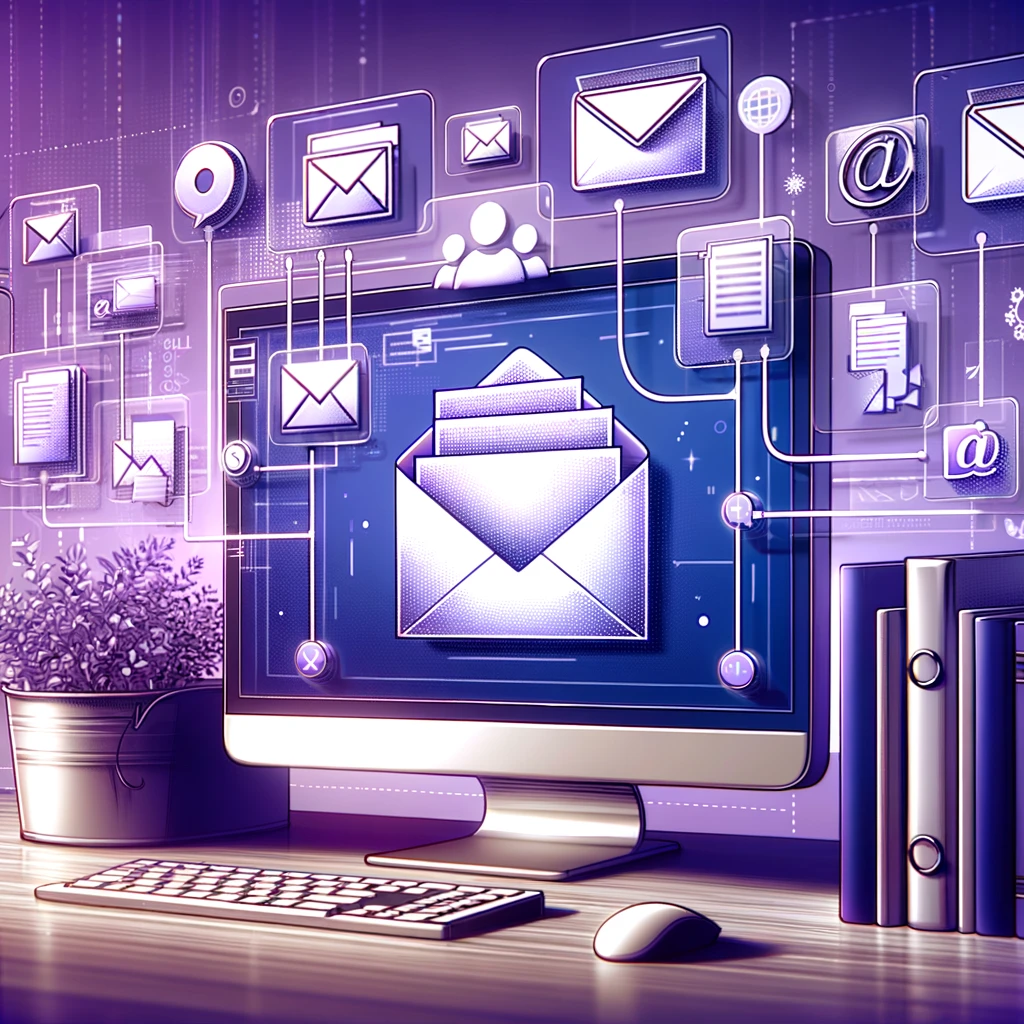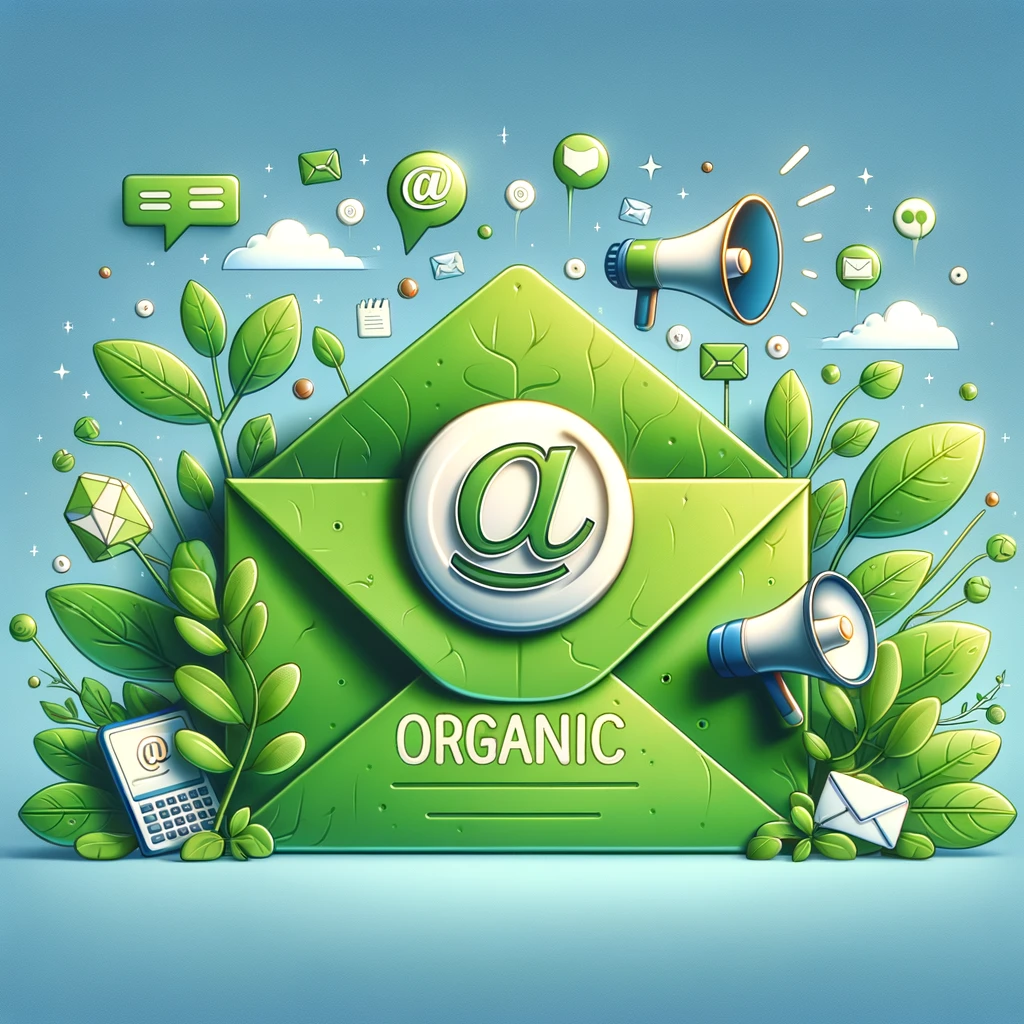
The complete guide to email list segmentation
The foundation of a solid marketing strategy is a well-defined target market. Who is your audience? What are they looking for from your company? How many are first-time customers or frequent buyers? Answering questions like these can help you determine everything from where to spend your marketing dollars to how to promote new products or services. When it comes to email marketing, list segmentation is the best tool for dividing up your consumer base into target markets. By taking this approach, you can put the right message in front of the audience most likely to relate and respond.
So, how effective is email segmentation? A 2015 MarketingSherpa case study showed that proper list segmentation increased open rates by 20 to 40 percent, with a subsequent rise in clickthrough rates. To give some perspective, the average open rate for email campaigns is approximately 21.8 percent, with slight variations across different industries.
Understanding email list segmentation
Segmentation offers the ability to divide your main contact list(s) into different subgroups. For small businesses, this works well when it comes to sending campaigns about specific products, services or offerings that may be more relevant or interesting to certain members of your audience than others. Segmentation gives you the chance to reach customers who are most likely to engage with the featured calls to action (CTAs).
While you’ll probably want to email all customers with information about major changes to your business or brand, regular email campaigns should always include segmentation.
Advantages of email segmentation
There are significant advantages to segmentation that you can benefit from when creating messaging and promoting products, including:
Potential for increased sales and brand engagement
Capitalize on special offers by targeting customers that you know are likely to purchase, especially when a product is in demand. If you’re a tax auditor, for example, send a campaign in early April. Remind people to file and offer your services if they’re procrastinating because they feel lost in the process. For retailers already offering spring/summer collections, target customers where temperatures are unseasonably warm in the last weeks of winter. Businesses that are service-focused can create how-to’s or useful tip sheets that provide value for readers as well.
When you want to give back to your customers
When you’re looking to reward customers, segmentation can make it easier to separate first-time buyers from repeat customers. Send a welcome email with a promo code to newbies, and a different campaign to your most loyal customers. Each month, choose an email campaign and send all responders a “Thanks So Much” email, which shows that you appreciate their reading your content.
Planning a new product launch? Reach out to a list of frequent buyers on your list and send them an exclusive sneak peek purchase link.
Another interesting tidbit: Segmentation also plays a vital role in keeping your emails out of the spam folder. Since your lists have been tailored more specifically when you segment, you’ll be less likely to send duplicate copies or mail anyone who’s previously unsubscribed.
Best practices for segmentation
There are many ways to implement segmentation, as we illustrate in this infographic. Create a list of loyal customers and send them an exclusive discount code. For list members who don’t interact with your original email, add them to a follow-up campaign. Send your most active newsletter readers an exclusive piece of content straight to their inboxes. Other common ways to segment include:
Geographic region
Segmentation by geography is one of the most common methods because it gives business owners the opportunity to communicate and talk to customers where they are. This route is especially valuable for anyone with an online store that may have shoppers nationwide or in other countries. However, for those with limited geographic reach such as restaurants or professional cleaning services, consider segmenting by city or neighborhood instead of broader measurements like state.
Customer behavior patterns
Another common way of segmenting lists is to look at the behavior of your customers and then divide based on those who took action and those who did not. This could be a list of buyers and non-buyers, readers and non-readers, or even those who opened your email but never clicked on any links. Consider whether you should add readers who interact less with your emails to their own list and include a bit more personalization to encourage a response.
Level of interest in your business
The classic “Hot, Warm, Cold” method is one that most professional marketers swear by because it allows you to segment your lists by level of interest in your products, services or brand and helps keep an organized, clean contact database. Whether you’re attending an event or collecting sign-up information from your audience online, include a question or two that gives the respondent an opportunity to indicate their likeliness to buy, and in what time frame. For hot leads, add them to a list and send an offer immediately. You may also want to build a lead nurture stream and establish a long-term relationship with warm and cold leads as they work their way through the decision-making process.
Segmentation and your VerticalResponse account
When using VerticalResponse, there are many options for creating targeted lists and tailoring your message to the right audience for email marketing success. After clicking “Segmentation” on the Contacts page, you can search your list based on different conditions to find customers that match the exact parameters of your requirements.

Activity-based segmentation
VerticalResponse offers activity-based segmentation focused on time frame. You can see which subscribers have opened or clicked on your campaigns in the last seven days, last month or last three months. Use the data to create separate campaigns for avid readers and unengaged customers.

Personalized segmentation
Personalization helps add a unique touch to any email marketing campaign by addressing readers directly. In addition to increasing the “wow” factor for your customers’ inboxes, statistics also show that personalized messages help increase opens and clickthroughs, and push users to answer CTAs.
VerticalResponse offers advanced segmentation functionality that can help “slice and dice” your list beyond basic activity. Known as “use cases,” these parameters let you take a deeper dive into your list by looking at the following:
Targeting by location: Use this type of segmentation to search for customers by country, state, region or ZIP code. This allows you to send promos for free shipping to select areas or an event invite for local customers. In the example below, you’ll find results for any contact with the State field of California.

Targeting by birthday: Celebrate your customers’ special day with a themed added value gift or Happy Birthday email. Use targeted birth segmentation where you can search by date of birth, year of birth or even the age of your customers.

Targeting by phone number: Want to get in touch with your customers quickly? Conducting a short survey or looking for feedback? Our phone number segmentation use case gives you the chance to locate customers by their home, work, mobile or fax numbers.

The problem with too much email list segmentation
As with anything else, too much of a good thing can often make things worse.
Segmenting for every campaign is probably not always necessary. There may be times where you’ll want broader audiences to see what you have to offer. Also, in terms of timing, you’ll need to create a certain level of original content or messaging for each segment. Consider your bandwidth and limit segments to the most valuable subgroups. Even though segmentation tools and free Guide to Email List Management make the process easier, managing your list takes some deliberation and strategy. But once you get started, you’ll be able to create emails that resonate with your customers and spur them into action.
Join 140,000 small business owners
© 2018, Contributing Author. All rights reserved.
 SUBSCRIBE
SUBSCRIBE 


